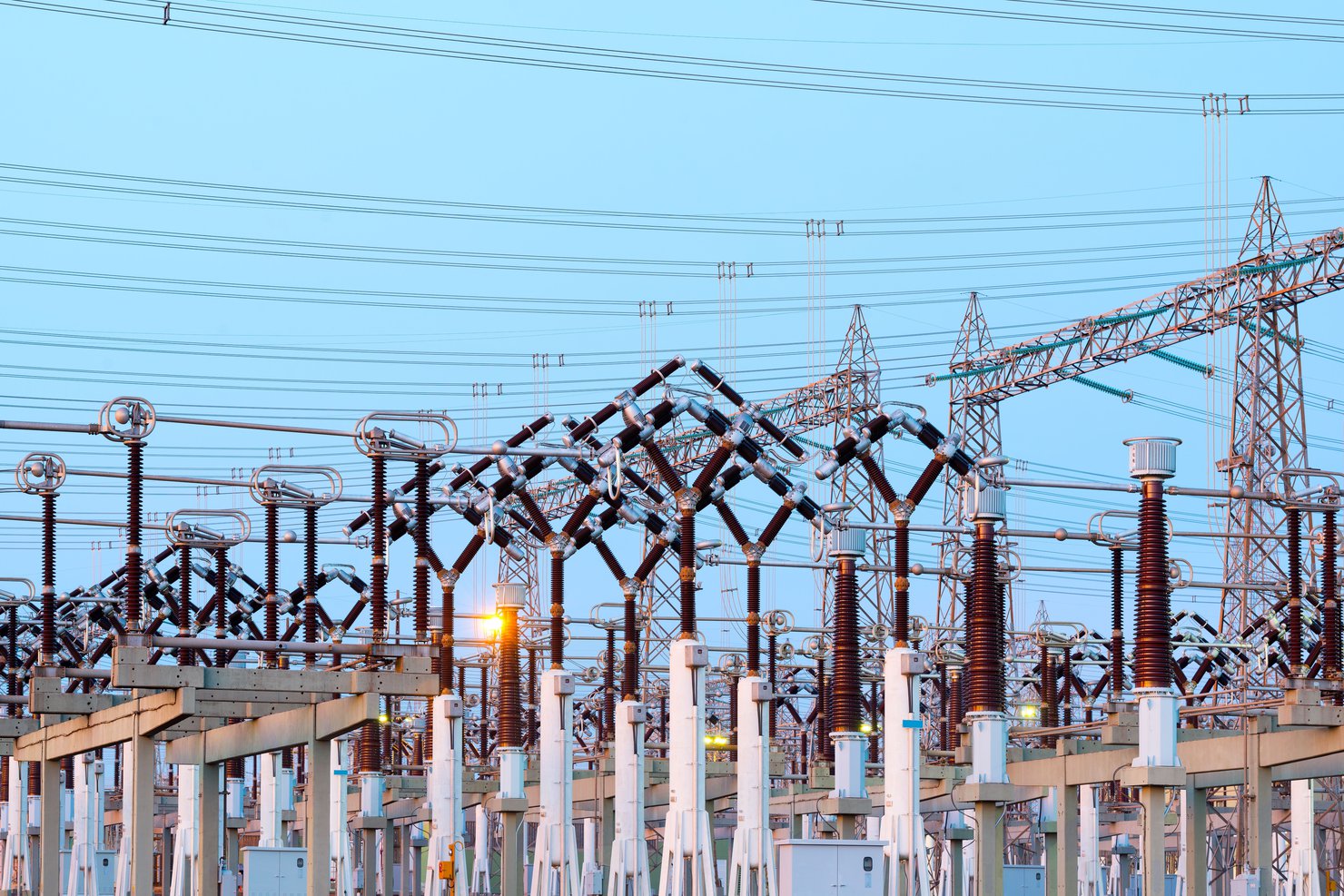The Inflation Reduction Act has removed many barriers to decarbonizing the electric grid and sets the stage for increased climate ambition by US states. Even so, states will do well to consider how to meet the challenges that remain.
The Inflation Reduction Act (IRA) will likely enable states to increase their climate ambitions in the electricity sector. But simply reducing the costs of building out clean electricity generation won’t be enough to allow states to decarbonize their electric grids.
The grid is overseen by many institutions that have overlapping authority, including the Federal Energy Regulatory Commission (FERC) and the North American Electric Reliability Corporation at the national level; regional transmission organizations and independent system operators at the regional level; public utility, energy, and environmental agencies at the state level; and utilities, independent generators, and local governments at the sub-state level. States will need to learn to coordinate among these institutions if they want to reach their goals.
In a workshop cohosted this past spring by Resources for the Future (RFF), the University of Virginia, and the National Renewable Energy Laboratory, experts came together to discuss the institutional barriers that states face as they promote clean-generation investment, demand management, and transmission. Many lessons from the workshop have become even more relevant, now that the IRA has removed many cost barriers.
Investment in Clean Power Generation
The clean energy tax credits in the IRA are designed to promote investment in clean electricity generation by reducing the cost of building and operating new facilities. These tax credits complement existing state decarbonization policies such as renewable portfolio standards, clean energy standards, capacity targets, or emissions caps, which also are designed to promote investment in clean generation. In fact, the IRA likely will allow states to increase the ambition of their current clean-generation policies. But even with increased subsidies and increased ambitions, investment in clean power generation remains subject to some important challenges that states can help resolve.
Market design that disfavors renewables
Electricity generation in several eastern regions of the United States is financed partly based on the expected revenue from capacity markets—but renewable energy resources typically do not receive much revenue from capacity markets, because renewables are considered to have low capacity value due to their intermittency. Last spring, RFF hosted an in-depth discussion on the role of capacity markets in the transition to a decarbonized electricity system. This event centered around a book coauthored by RFF University Fellow Todd Aagaard, which offers insights into the design and regulation of capacity markets and their potential role in the clean energy transition. More recently, RFF hosted a workshop titled “Reforming Resource Adequacy Practices and Ensuring Reliability in the Clean Energy Transition,” which will generate a forthcoming report. States that are looking to decarbonize may want to consider the lessons learned through this type of research and push the regional transmission organizations in their regions to value renewable capacity in a more nuanced way.
Backed-up interconnection queues
The longer that proposed generation facilities have to wait to be connected to the grid, the less likely those facilities are to be built. Interconnection queues have been getting longer in recent years, which increases the difficulty of adding large quantities of renewables to the grid. FERC’s notice of proposed rulemaking for interconnection in July 2022, which promotes a “first-ready, first-served” process, is a step towards addressing this issue. States can push FERC and regional transmission organizations to improve the interconnection process and work with neighboring states on regional transmission planning that recognizes wider regional benefits.

Siting opposition
Local authorities often have the final say on whether a renewable energy facility is built. States can facilitate relationships between developers and local governments by providing up-to-date information, setting clear guidelines for interactions, and making sure all parties can benefit through mechanisms like siting agreements.
Policy uncertainty
While the passage of the IRA has provided certainty about the tax-credit regime under which clean generation will be built, both state and federal policy around climate and electricity still are subject to change. This unpredictability can make it difficult for renewable energy projects to be planned and built. States that employ multiple complementary policies while maintaining flexibility can help insulate projects from sudden changes—although employing layered policy can decrease economic efficiency.
Tension between local self-sufficiency and cost-effectiveness
Many state electricity policies focus on decarbonizing the grid entirely within the state itself. Policies with this structure can be attractive to states, because these types of policies may help keep economic development and public health benefits within the state and may offer greater environmental integrity when states have no control over the actions of their neighbors. But go-it-alone policies can be significantly more expensive than policies that involve interstate coordination; policymakers should balance these different priorities.
Demand Management
The IRA promotes electrification of transportation and buildings, both of which are deeply necessary for decarbonizing the entire economy. Reducing growth in peak demand, even as overall demand increases, is one of the main ways to keep costs low, and demand management—the shifting of demand from peak hours to off-peak hours—is the main strategy for doing so. States can help coordinate energy efficiency and these demand-management efforts, though challenges remain.
Lack of access for low-income households
Historically, energy-efficiency policies have struggled to reach some demographics, including renters and low-income households. As states switch from promoting energy efficiency to promoting demand management, similar issues may arise. States can address this problem by specifically designing programs to reach low-income households, perhaps by combining new programs with programs that already are accessible to low-income households.
Missing metrics of success
Most demand-management policies employed by US states focus on reducing overall electricity demand through energy-efficiency targets and associated programs; unfortunately, these policies don’t always include an enforcement mechanism. States can use performance-based programs, in which utilities are compensated only if they meet reduction targets—but determining whether the target has been met can be difficult, especially when the demand is being compared to counterfactual demand projections that are themselves uncertain. Enforcing these metrics is an area for future research, including building on work by RFF scholars Brian C. Prest, Karen Palmer, and Casey Wichman that uses machine learning to create counterfactual baseline projections.

Inadequate incentives for electricity customers
Current electricity rates generally do not reflect the marginal cost of generation, which means that customers don’t know the most cost-effective times to scale back their demand for electricity. Innovative time-varying rate structures could communicate this information about marginal costs and encourage customers to reduce demand at times with the greatest potential to reduce costs for themselves and for the grid. Time-varying rates also can reveal opportunities to grow demand at low cost to consumers, and such opportunities often coincide with periods of abundant renewable energy supply. RFF Fellow Beia Spiller has done extensive work on electricity rate design.
Inadequate incentives for utilities and regional transmission organizations
Demand management often is a more cost-effective way to meet system needs than building additional generation or transmission. As things stand, however, utilities in regulated regions typically are compensated based on capital investment, with utilities in both regulated and deregulated regions compensated based on investment in the distribution grid. Demand resources—that is, managed reductions in electricity demand instead of additional generation of electricity—often are unable to bid into regional electricity and capacity markets in the same way that generators can. States can change the business models of utilities, pushing their utilities toward demand resources. States also can advocate for greater participation of demand resources in regional markets, working with FERC and regional transmission organizations to do so.

Confusing and high-risk rate structures
Changing customer rates to reflect the marginal cost of electricity may facilitate demand management and produce positive outcomes; on the other hand, time-varying pricing may expose customers to the risk of high prices that those customers may not be equipped to manage. Focusing on simple competitive retail rates (without time-varying costs), incoming RFF Fellow Jenya Kahn-Lang has shown that predatory marketing practices and customer inattention mean that low-income consumers often lose money when they switch to competitive retail electricity providers. This pattern could be worse with the introduction of more complex rate structures. The use of simpler rates or automation for residential customers, and careful evaluation and testing of rate designs before mass application, can protect consumers and prevent harm.
Transmission
The IRA provides tax credits for transmission, because increasing transmission capacity will allow population centers to access the clean energy resources they’ll need to cover their demand. But coordinated transmission planning is difficult, even with subsidies—so, state engagement in the process will be key.
Institutional mismatch
Transmission is inherently a multi-jurisdictional and multi-institutional affair. Transmission requires coordination among FERC, regional transmission organizations, and neighboring states. FERC’s April 2022 notice of proposed rulemaking for transmission will provide guidance to states as they move toward proactive planning.
Complex cost allocation
FERC requires that the costs of transmission be allocated among states according to the “beneficiary pays principle”—meaning that all who benefit should pay proportionate to the benefits they receive. But quantifying the benefits and determining where those benefits accrue is a complicated affair. FERC’s notice of proposed rulemaking for transmission gives states a more formal role in deciding cost allocation. This is an area in which research and quantitative modeling can be useful.

Limited state government expertise and capacity
Planning for new transmission infrastructure and engaging in multi-state planning processes take an enormous amount of knowledge and time, and many states do not have capacity for this activity. States that are looking to promote transmission will need more people with this expertise working in and with state governments.
Local opposition to transmission investment
As with siting considerations for facilities that generate clean power, transmission siting can be either facilitated or blocked by local governments. As part of regional transmission planning processes, states can help regional transmission planning processes identify the transmission pathways that have minimal impact on local communities and can help include local communities from the early stages of the planning process.
Power to the States
Now that the IRA has provided the funding to facilitate electrification and grid decarbonization, it’s up to the states to make full use of that funding by engaging with the institutions that have overlapping authority over the electricity sector, including regulators and various levels of government. There’s much to do, and RFF researchers are looking forward to engaging with states on these issues.






